At the end of this tropisms and turgor pressure lesson plan, students will be able to investigate how plants respond to external stimuli found in the environment including phototropism, geotropism, hydrotropism, and thigmotropism. Also, they will be able to describe and relate responses, such as wilting in plants, that may result from internal stimuli. Each lesson is designed using the 5E method of instruction to ensure maximum comprehension by the students.
The following post will walk you through each of the steps and activities from the tropisms and turgor pressure lesson plan.
ENGAGEMENT
Objective Introduction
At the beginning of the lesson, the class will do a Think-Pair-Share to discuss the objective.
Class Activity
- Tell students they are going to be studying external stimulus and response with plants.
- Discuss what each of those words means: external, stimulus, response.
- In what context have they heard the words used? If they talk about the human body, that is fine.
Student Activity
- Divide the students into groups of four.
- Place four seeds into a petri dish with pointed ends of the corn seeds or inside of bean seeds facing towards the center.
- Cut a piece of filter paper so it fits in the petri dish.
- The filter paper should cover the seeds.
- Carefully, add 15mL of water to cover the filter paper.
- Place enough cotton on the filter paper so when the cover is put on, the filter paper and seeds won’t move.
- Tape the petri dish shut.
- Turn the petri dish over. You should be able to clearly see the seeds.
- Tape the petri dishes to the inside of a dark cabinet, so they are upright with the seeds showing. For example, they should hang on the door, not sit on the shelf.
- Keep the seeds in the dark for 3-4 days.
- Have the students write a prediction of what they think will happen.
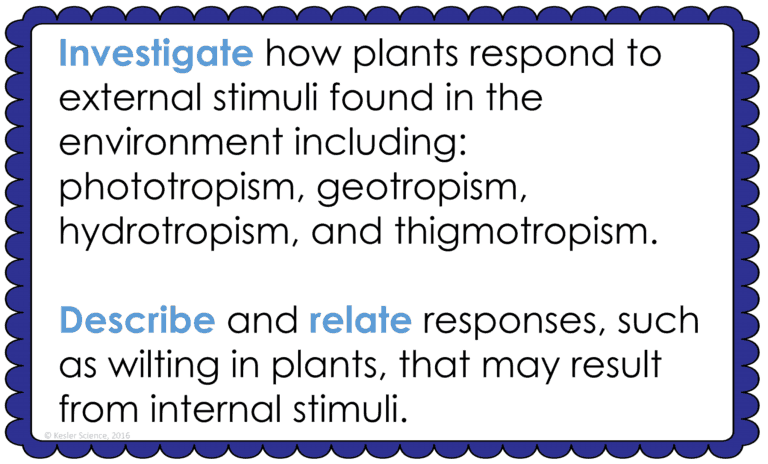
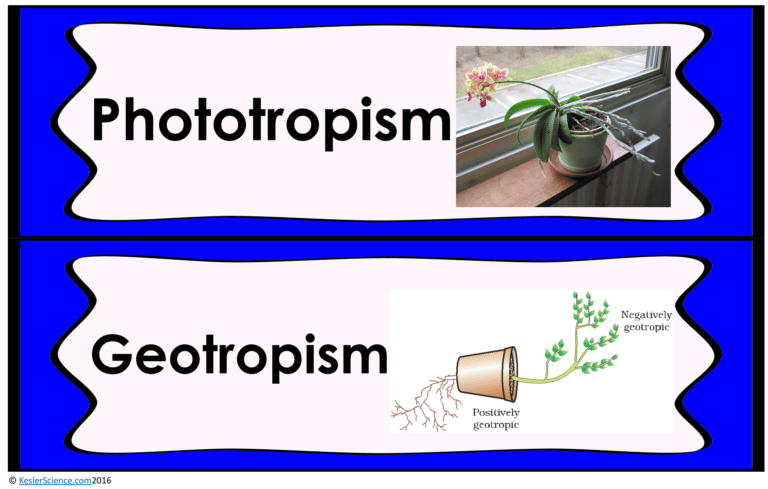
The teacher will help to clear any misconceptions about tropisms and turgor pressure. A major misconception is that students don’t understand that plants are affected by both internal and external stimuli/responses.
Estimated Class Time for the Engagement: 20-30 minutes
EXPLORATION
This student-centered station lab is set up so students can begin to explore tropisms and turgor pressure. Four of the stations are considered input stations where students are learning new information about tropisms and turgor pressure and four of the stations are output stations where students will be demonstrating their mastery of the input stations. Each of the stations is differentiated to challenge students using a different learning style. You can read more about how I set up the station labs here.
EXPLORE IT!
Students will be working in pairs to better understand tropisms and turgor pressure. In this station, students identify the types of tropisms involved in each of the pictures. Students will follow the steps and record their observations on their lab sheet.
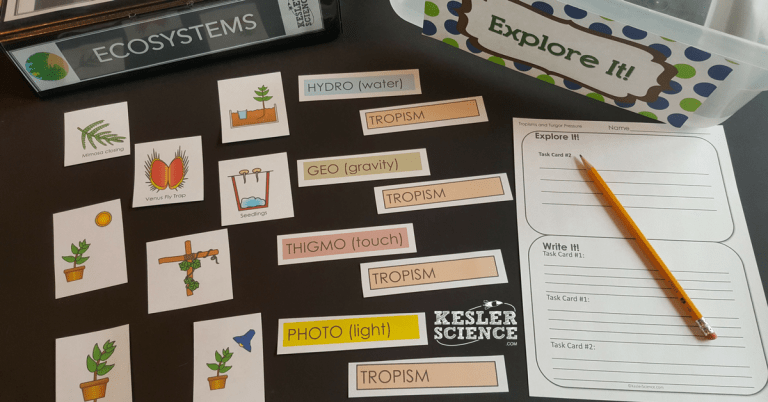
WATCH IT!
At this station, students will be watching a short video explaining tropisms and turgor pressure. Students will then answer questions related to the video and record their answers on their lab station sheet. For example: What does the prefix “trop” mean? In geotropism, give examples of a positive and a negative response in a seedling? In a “touch me not” plant (mimosa), is its response to touch positive or negative? What is the fourth tropism from this lab that was not mentioned in the video?
RESEARCH IT!
The research station will allow students to explore an interactive web page that helps them to understand tropisms and turgor pressure. Students will be instructed to complete a few tasks and record answers on their lab sheets.
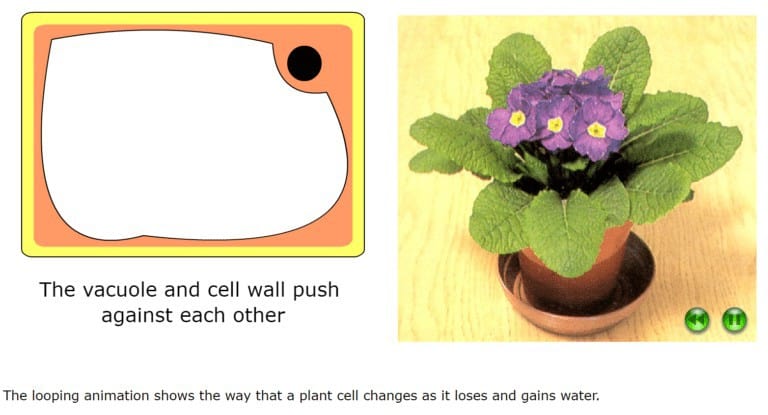
READ IT!
This station will provide students with a one page reading about turgor pressure. There are 4 follow-up questions that the students will answer to show reading comprehension of the subject.
ASSESS IT!
The assess it station is where students will go to prove mastery over the concepts they learned in the lab. The questions are set up in a standardized format with multiple choice answers. Some questions include: Why is turgor pressure important to a plant? Tropisms are a plant’s response to ______. Which prefix describes the type of tropism that responds to touch? The roots of a plant growing downward during geotropism is an example of?
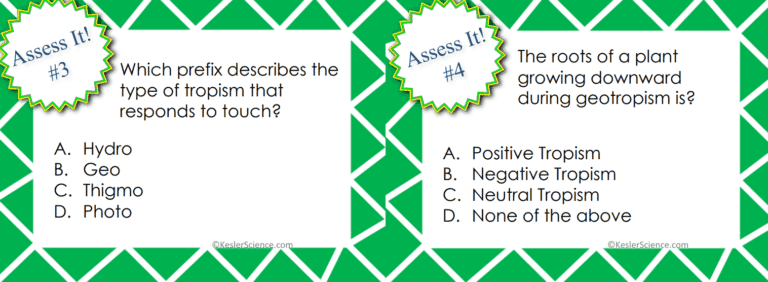
WRITE IT!
Students who can answer open-ended questions about the lab truly understand the concepts that are being taught. At this station, the students will be answering two task cards: Choose two of the four tropisms in this lab and explain how they respond to stimuli. Describe turgor pressure in the cells in plants, and how it affects the plant.
ILLUSTRATE IT!
Your visual students will love this station. Students are to draw a picture that demonstrates their knowledge of tropisms. Their drawings will include all four types of tropisms.
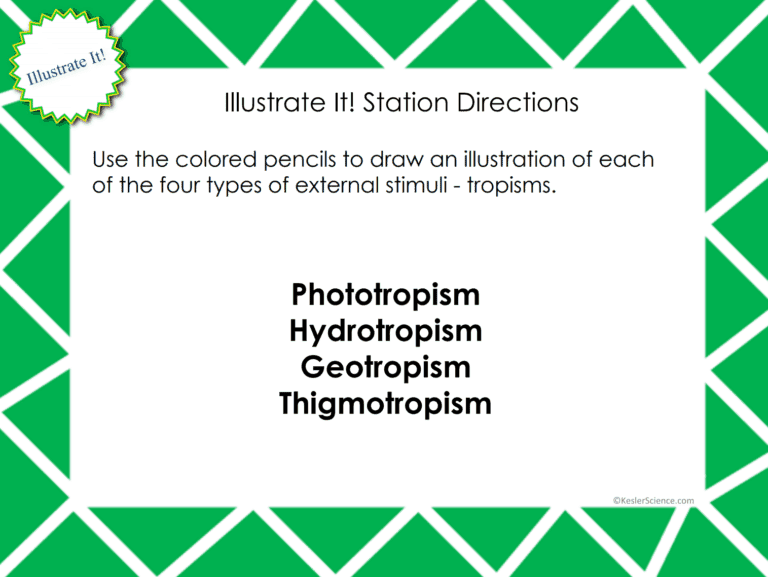
ORGANIZE IT!
Students at this station will match the sets of cards. Cards will describe the type of response plants have towards a certain stimulus. Students will need to identify whether the response is either positive or negative. Once students have completed their organization, the teacher will check their understanding.
Estimated Class Time for the Exploration: 1-2, 45 minute class periods
EXPLANATION
The explanation activities will become much more engaging for the class once they have completed the exploration station lab. During the explanation piece, the teacher will be clearing up any misconceptions about tropisms and turgor pressure with an interactive PowerPoint, anchor charts, and notes. The tropisms and turgor pressure lesson includes a PowerPoint with activities scattered throughout to keep the students engaged.
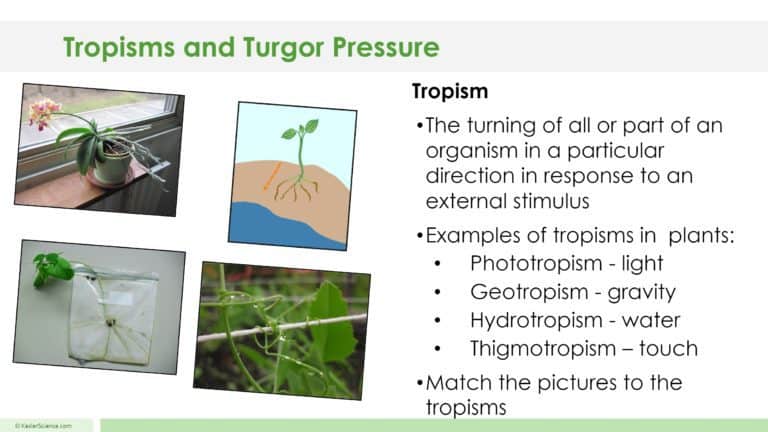
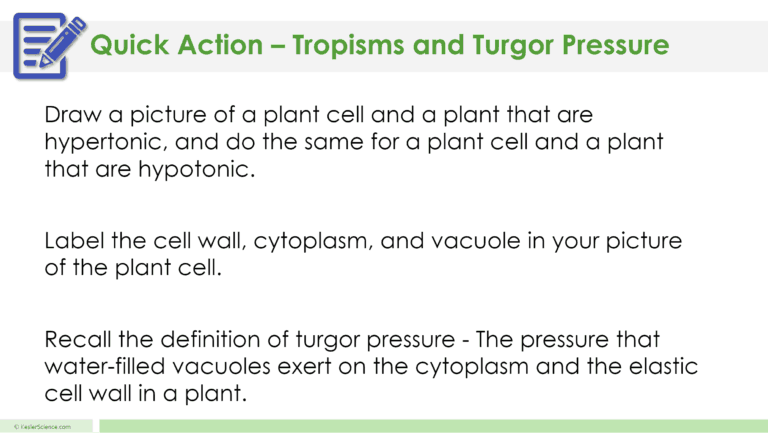
The students will also be interacting with their journals while taking notes from the PowerPoint. If you have students that need modified notes, the 5E lessons come equipped to help give every student access to the lesson.
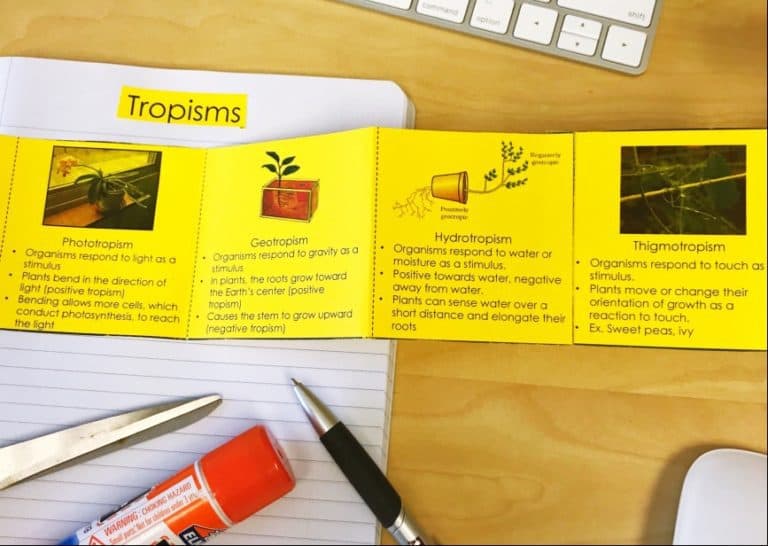
Estimated Class Time for the Exploration: 2-3, 45 minute class periods
ELABORATION
The elaboration section of the 5E method of instruction is intended to give students choice on how they can prove mastery of the concept. When students are given choice the ‘buy-in’ is much greater than when the teacher tells them the project they will have to create. The elaboration project will allow students to create a display board, teach a lesson, foldable, experiment, or even a Prezi to show their understanding of tropisms and turgor pressure.
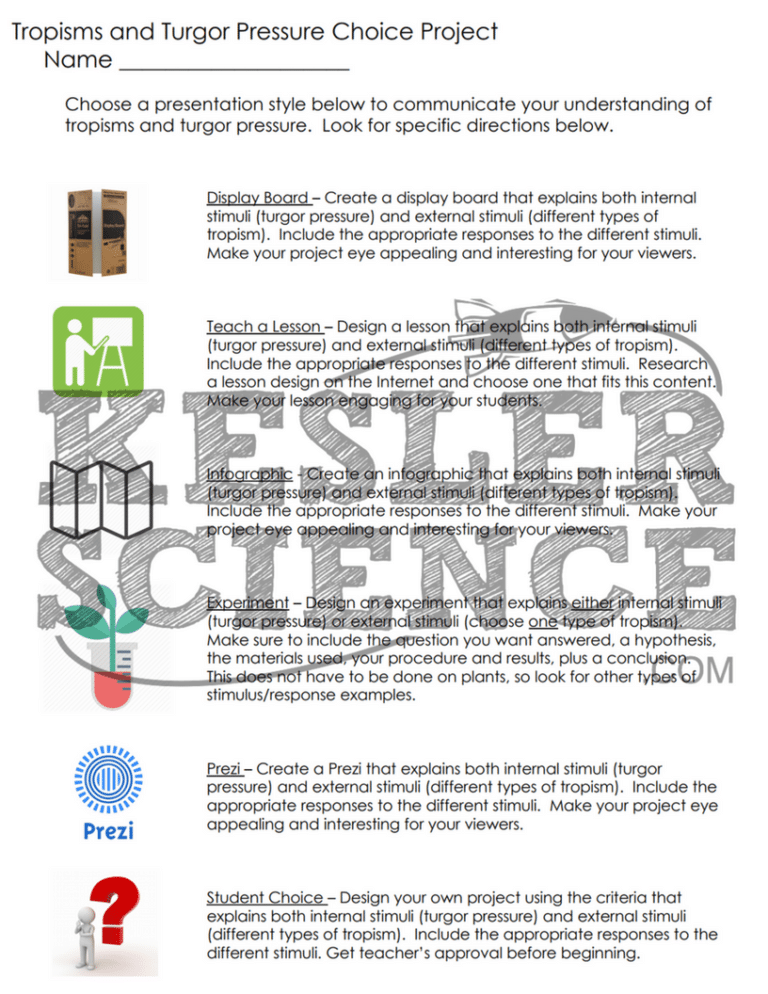
Estimated Class Time for the Elaboration: 2-3, 45 minute class periods (can also be used as an at-home project)
EVALUATION
The final piece of the 5E model is to evaluate student comprehension. Included in every 5E lesson is a homework assignment, assessment, and modified assessment. Research has shown that homework needs to be meaningful and applicable to real-world activities in order to be effective. When possible, I like to give open-ended assessments to truly gauge the student’s comprehension.
Estimated Class Time for the Elaboration: 1, 45 minute class period
DOWNLOAD THE FULL LESSON NOW
The full lesson is available for download from my TpT store. Save yourself a ton of time and grab it now.
Download Over $100 in FREE Resources
For Middle School Science
Simply create a login below and gain immediate access to a selection of our Kesler Science product line worth $100 - for FREE. There's a full version of every product type! You'll also join tens of thousands of middle school science teachers who receive timely tips and strategies straight to their inbox.





